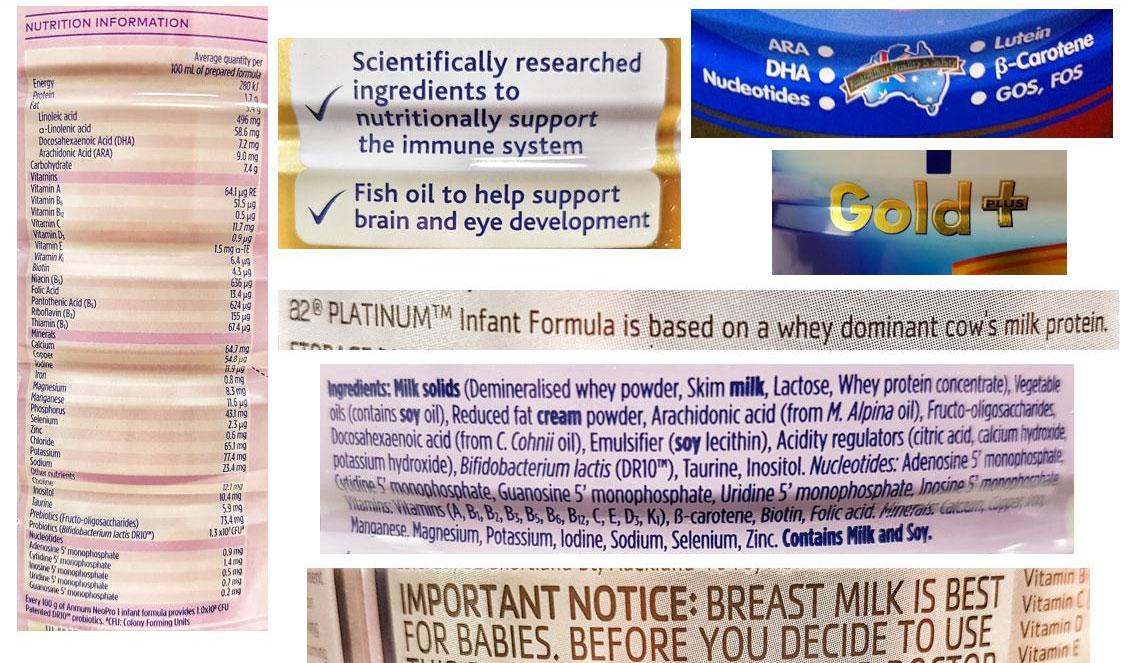Infant Formula Use and Decision Making Study (InFormD): Infant formula purchase decisions
Background
By three months of age, around 60% of Australian and New Zealand infants are receiving some infant formula. A large proportion of Australian and New Zealand caregivers are therefore making purchase decisions around infant formula products. Under the current Australia New Zealand Food Standards Code (Standard 2.9.1–Infant Formula Products), infant formula products sold in Australia and New Zealand are subject to a range of mandatory labelling and packaging requirements. Other voluntary information may also be provided (for example, premium labelling). Given the limited literature on the topic of infant formula purchase decisions, the overall aim of this project is to increase understanding of how Australian caregivers perceive, interpret and use mandatory and voluntary “on package” labelling information on infant formula products when making purchase decisions. Findings from this study will help determine whether consumers are able to make informed infant formula purchase decisions, and may help inform changes to Standard 2.9.1–Infant Formula Products.
Project objectives
- To increase understanding of caregivers’ perceptions, interpretation and use of the following mandatory and voluntary “on-package” labelling information on infant formula products:
- claims regarding health and nutrient content
- the nutrition information statement
- the ingredients list
- the protein source statement
- premium labelling (e.g. ‘Gold’)
- the ‘Breast is best’ statement
- To examine perceived adequacy of labelling information on infant formula products
The findings from this study will help to inform Food Standards Australia New Zealand’s review of infant formula product regulations in the Australia New Zealand Food Standards Code.

Project outputs
Researchers involved in this project are preparing a paper with the key findings. The abstract is below.
Abstract: In seeking to determine whether consumers are able to make informed purchase decisions regarding infant formula, this study examined caregivers’ perceptions, interpretation and use of the following mandatory and voluntary on-package labelling information on infant formula products: claims regarding health and nutrient content, the nutrition information statement, the ingredients list, the protein source statement, premium labelling (e.g. ‘Gold’) and the ‘Breast is best’ statement. Perceived adequacy of labelling information on infant formula products was also examined. Findings from 21 focus group discussions with a total of 136 Australian and New Zealand caregivers of formula-fed infants, revealed that caregivers commonly experience difficulties when using labelling information to identify and understand key differences between infant formula products, and that comparing products can be a complex task regardless of education level or ethnicity. Moreover, caregivers believe that the ‘breast is best’ statement increases the feelings of guilt and failure felt by women who are unable or struggle to breastfeed, and may therefore be adversely affecting maternal emotional wellbeing and contributing to the risk of postnatal depression. This is a cause for concern, as it suggests that current labelling information on infant formula products prevents some caregivers from making informed purchase decisions; and some mandatory labelling elements maybe contributing to negative emotional experiences. Further research is required to determine the most effective strategies for meeting information needs of consumers to enable easier identification and understanding of product differences. This is especially important given the vast range of infant formula products across large price ranges in the market add to the complexity of purchase decisions.
Project partners
Collaborating institutions:
Food Standards Australia New Zealand
Funding:
Food Standards Australia New Zealand (January-June 2016)
Contact
GFAR researchers involved in this project:
- Dr Lenka Malek
- Professor Wendy Umberger
- Ms Anna Finizio
